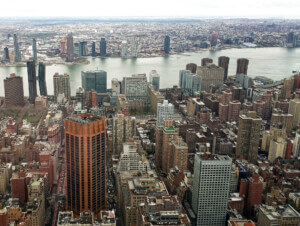The New York City Economic Development Corporation (NYCEDC) and Mayor’s Office of Climate Resiliency (MOCR) today announced the release of the Financial District and Seaport Climate Resilience Master Plan, a sweeping framework that aims to shield a nearly one-mile swath of the Lower Manhattan waterfront from The Battery to the Brooklyn Bridge from rising sea levels and future coastal storms exacerbated by climate change.
The community-shaped plan, which is estimated to cost between $5 to $7 billion and take 15 to 20 years to fully complete, will fortify the Financial District and historic South Street Seaport neighborhood by extending the East River shoreline by up to 200 feet from its current location with an expansive floodwall system that doubles as open public space. Both adjacent waterfront neighborhoods were battered by Superstorm Sandy in 2012. When completed, the city anticipates the design will safeguard 140 acres of Manhattan that is home to one of one of the world’s largest central business districts, thousands of residents, and multiple crucial transportation hubs while preventing $1 billion in climate-related damages beginning in the 2050s. Per New York City Panel on Climate Change 90th percentile projections, rising tides are projected to flood the Financial District and Seaport on a monthly basis by the 2050s, then daily by the 2080s. Frequent tidal flooding is likely to be seen as early as the 2040s, according to a joint press release from the NYCEDC and MOCR.
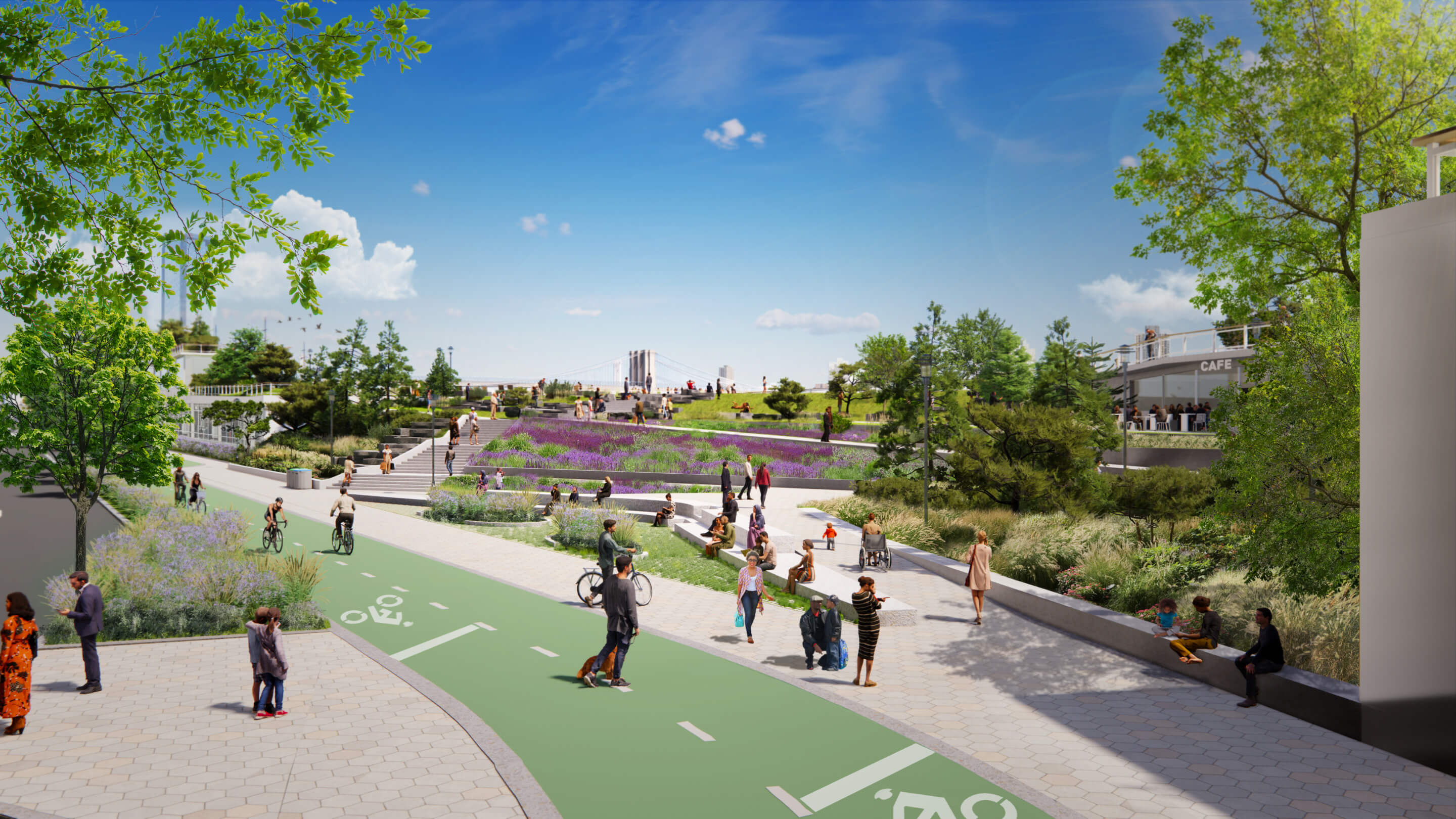
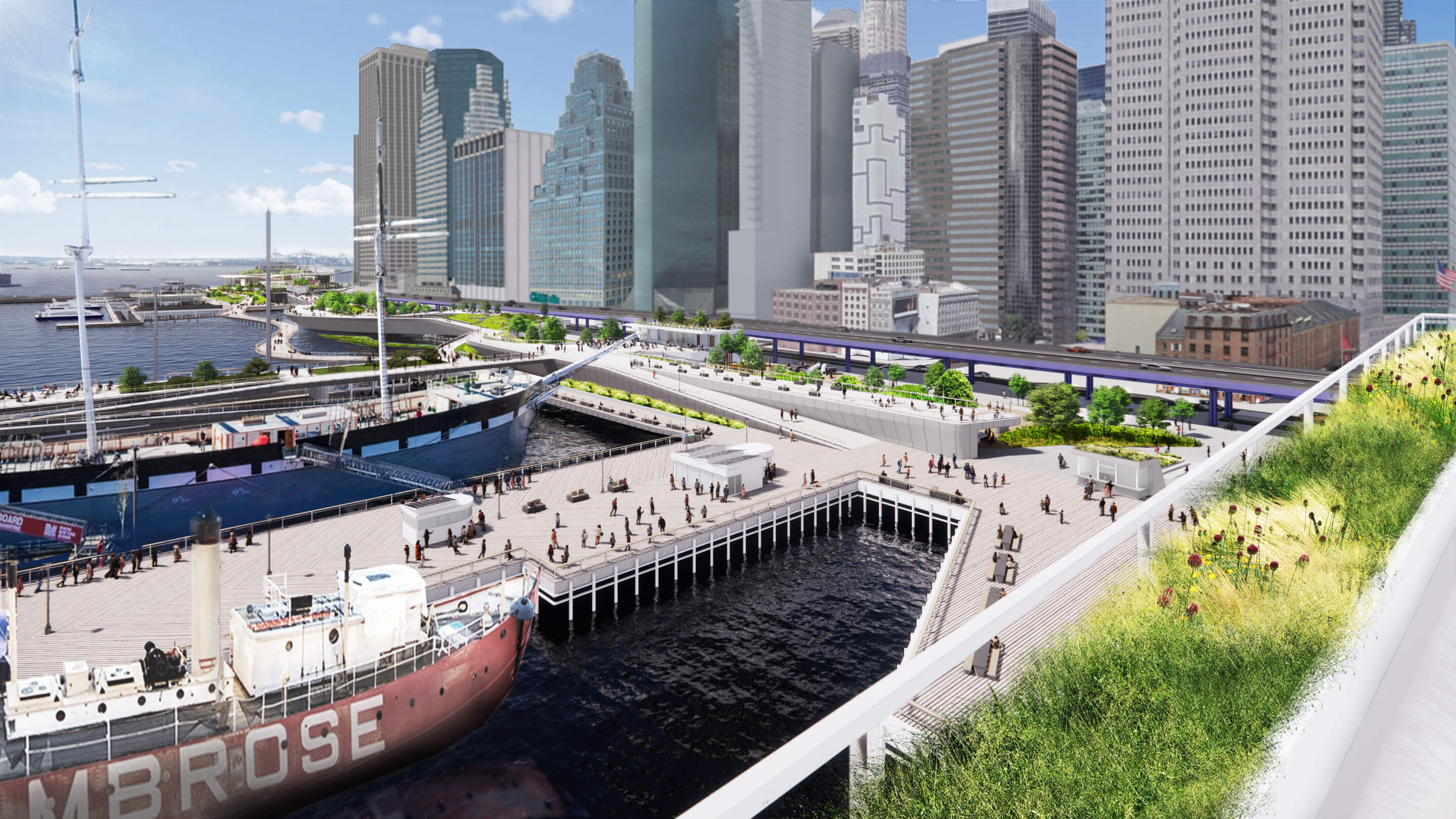
“NYCEDC and MOCR have envisioned a 21st-century resilient waterfront that stands to be a model for other major cities,” said NYCEDC President and CEO Rachel Loeb in a statement. “We’ve done years of work and we have the innovation. There’s no doubt climate change is here. Sea levels are rising, and stronger, more devastating storms will only continue, which is why we must protect our coastline and safeguard our vulnerable historic Seaport area and Financial District. If we do not take action now residents, businesses, and critical infrastructure are put in jeopardy. We must rely on strong partnerships at all levels of government to help implement this plan.”
Led by the NYCEDC and MOCR in partnership with a host of city agencies, the Financial District and Seaport Climate Resilience Master Plan received technical and design support from an interdisciplinary consulting team helmed by the Dutch engineering firm Arcadis. As mentioned, the community played a formative role in shaping the plan through public meetings and workshops, an online engagement portal, youth outreach in partnership with local schools, and “other creative forms of engagement” per the city.
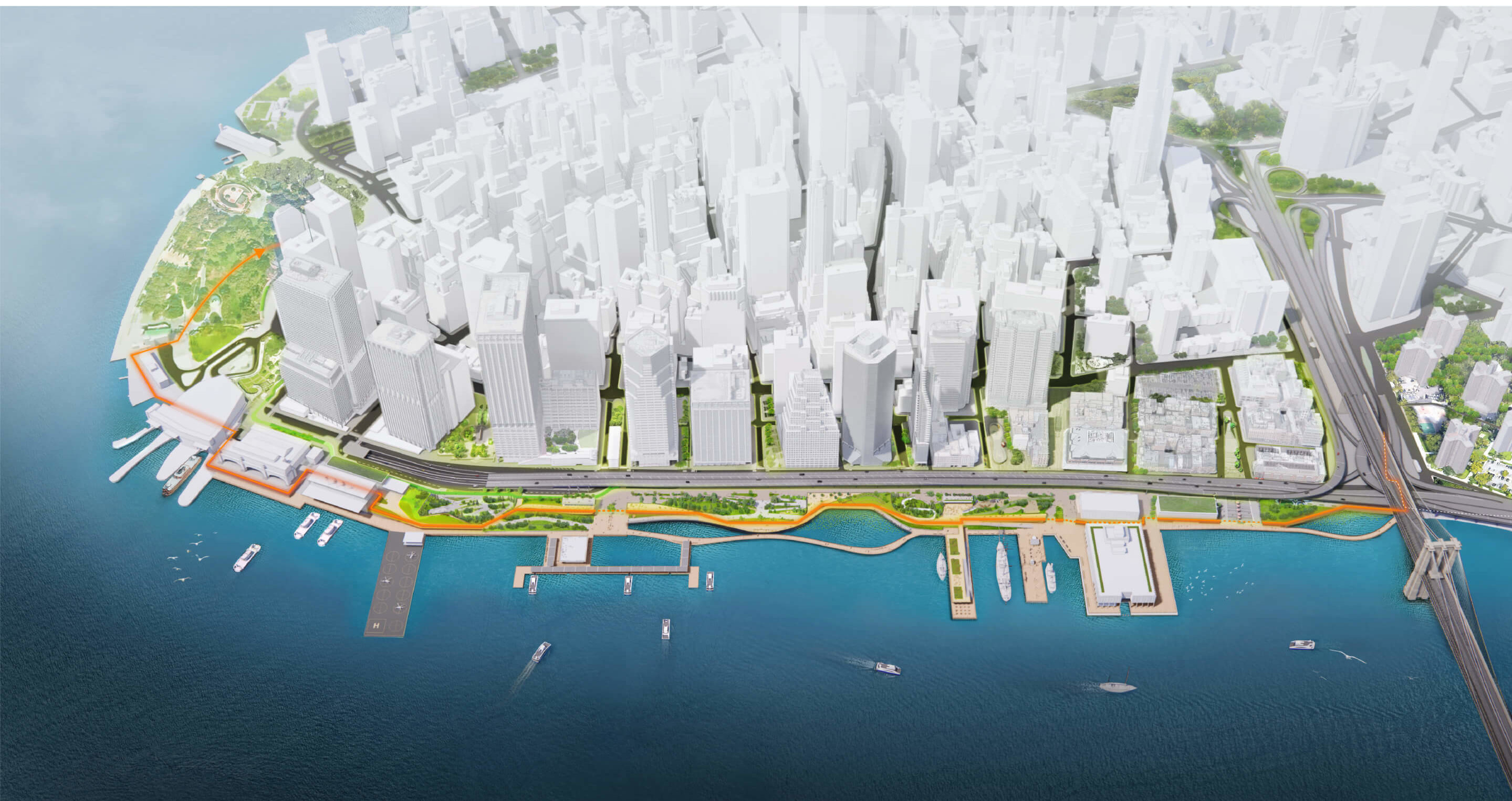
“We continue to stand firm in the prioritization of parkland filled with active and passive recreation opportunities, green infrastructure, community uses and understanding how this project will seamlessly connect with the other resiliency projects in order to ensure a comprehensive protection strategy,” said Tammy Meltzer, chair of Manhattan’s Community Board 1, in a statement. “As we move into the next phase of planning, we reiterate the importance of community based planning which will best steward public funds for maximum public benefit.”
Loeb’s mention of all levels of government helping to bring the plan to life comes at a fraught time for the nation’s urgent battle against climate change. Earlier this month, United States Senator and coal baron Joe Manchin, a Democrat from West Virginia, appeared on Fox News to announce that he would not support the Biden administration’s Build Back Better Plan following months of intensive negotiations with the White House and early passage by the House of Representatives. (Joining Manchin, no Republican senators have signaled that they will support the nearly $2 trillion social spending and climate plan.) The now in-limbo legislation includes the largest climate change investment in United States history, including $555 billion earmarked for renewable energy and clean transportation incentives, which aim to help reduce greenhouse gas emissions by 50 percent to 52 percent from 2005 levels by 2030. The bill also includes funding for other climate-related projects, including coastal resiliency efforts in areas most vulnerable to rising seas.
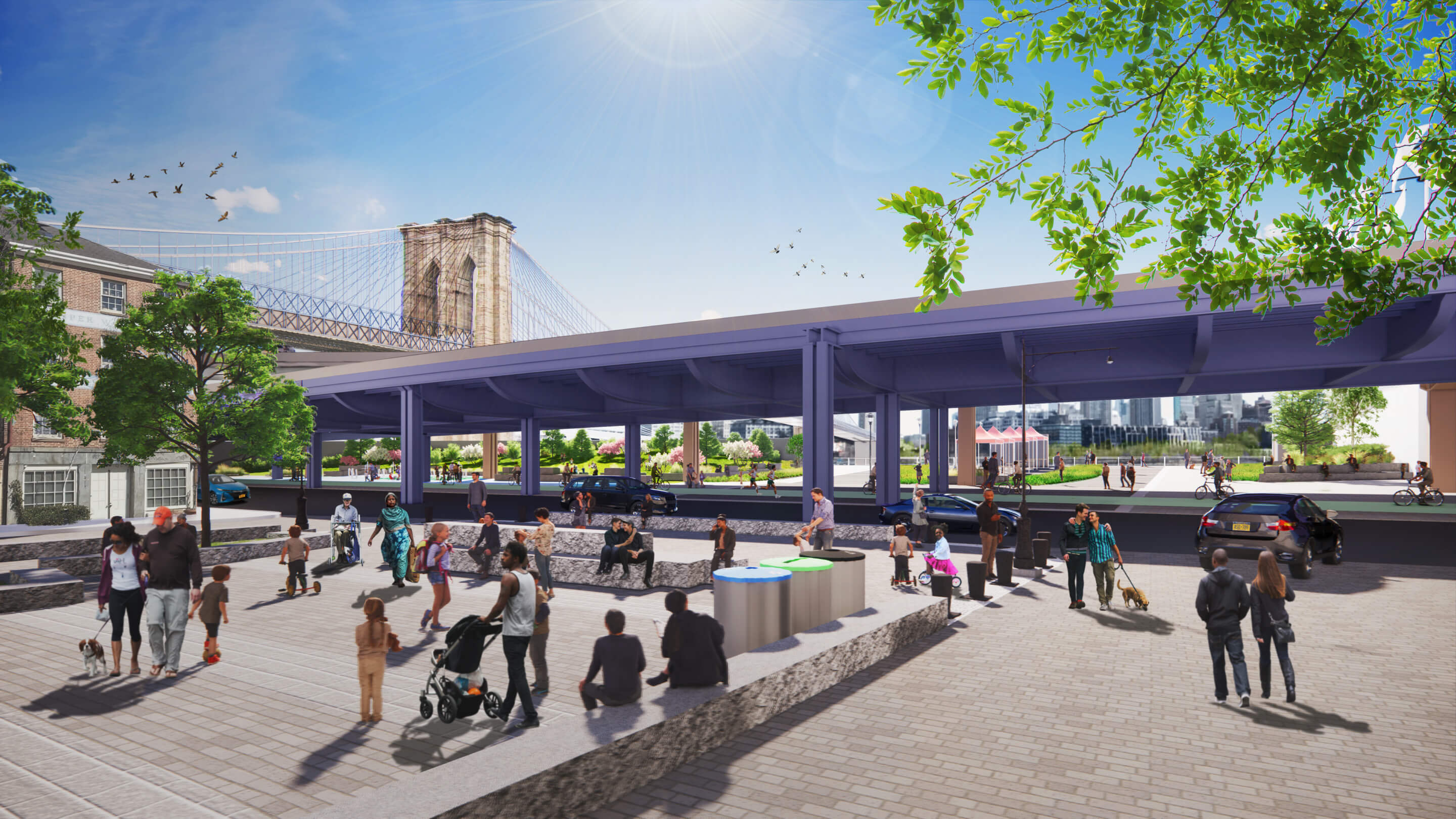
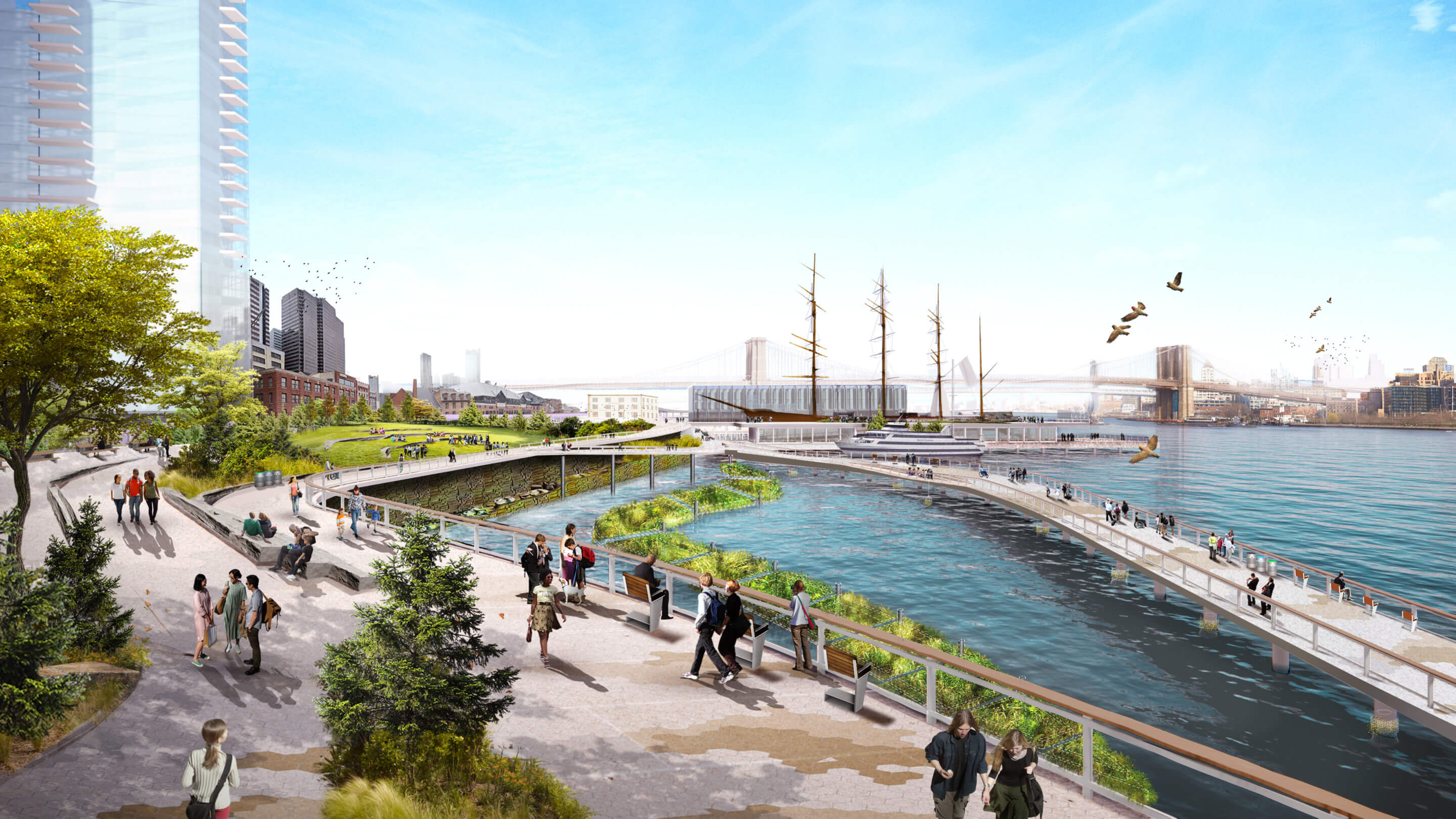
Meanwhile, New York City has committed over $900 million to its Lower Manhattan Coastal Resiliency (LMCR) strategy, which the just-revealed FiDi and Seaport Climate Resilience Master Plan is part of along with a suite of major capital projects planned for Battery Park City, The Battery, and the Two Bridges neighborhood just north of the Brooklyn Bridge. And before the larger FiDi Seaport Climate Resilience Master Plan is even implemented, the South Street Seaport, which is located within the most flood-vulnerable part of the master plan study area, will be subject to a $110 million coastal resiliency project first announced by outgoing Mayor Bill de Blasio in October.
Separately, work on East Side Coastal Resiliency (ESCR) Project is also now officially underway further up Manhattan’s East River shoreline at East River Park. That project, jointly funded by the city and federal government, has been subject to fierce pushback from community activists, and on December 17 New York’s Court of Appeals dismissed a legal challenge aiming to halt demolition work at the beloved local park to make way for flood infrastructure.
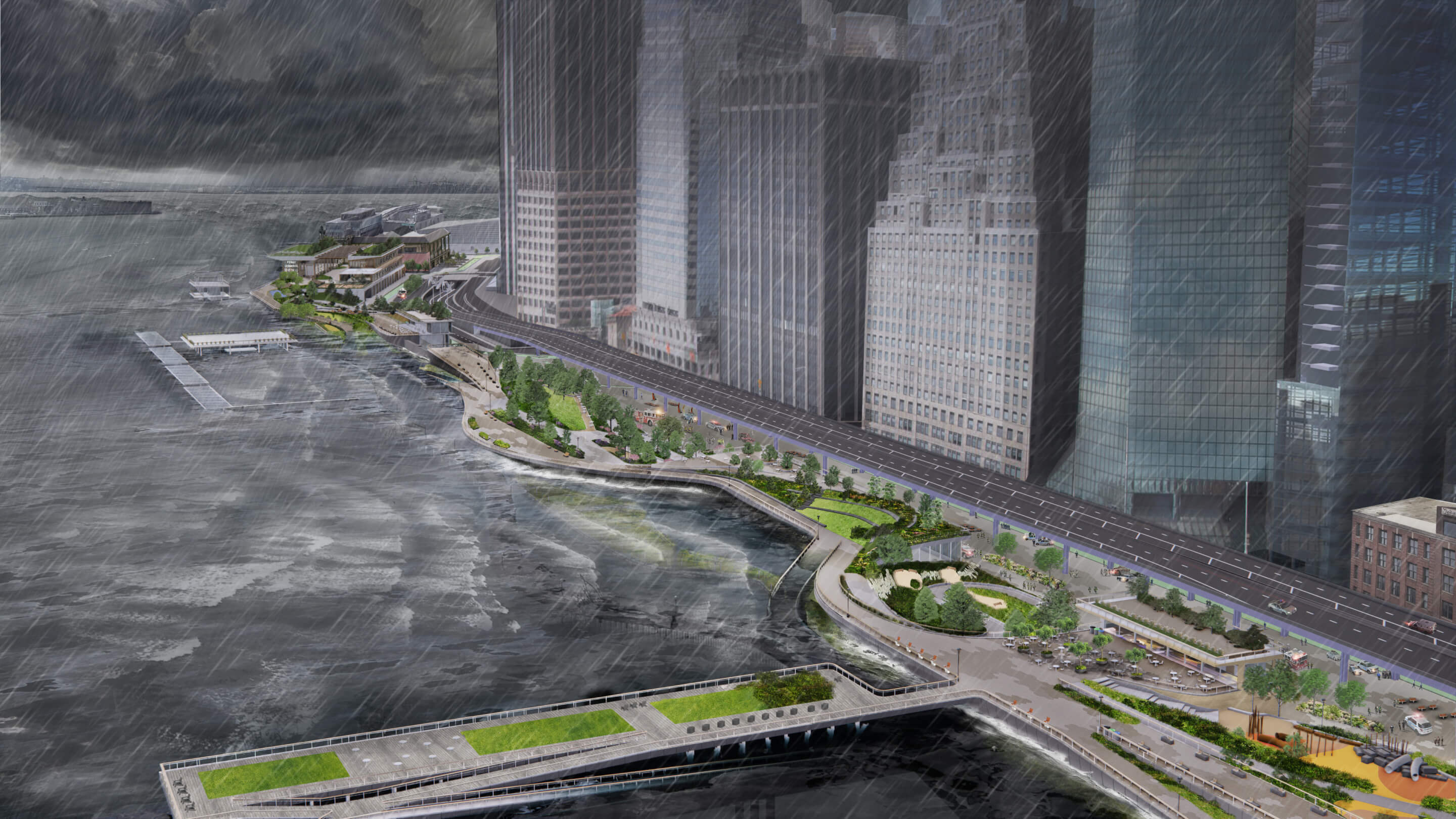
As for the FiDi Seaport Climate Resilience Master Plan, it envisions a multilevel flood protection system, that as mentioned, extends the shoreline and includes an upper level of landscaped berms rising 15 to 18 feet that will protect the neighborhoods from severe storms while doubling as new open public space offering sprawling views. Below that will be what the city has described as a “continuous waterfront esplanade” that is elevated several feet above the shoreline to “protect against sea level rise while connecting New Yorkers to the water’s edge.” Also included in the plan is stormwater management infrastructure including a new pump station; storm-resilient ferry terminals for the Staten Island Ferry, the Governors Island Ferry, NYC Ferry, and other operators; resilient piers for the historic ships that call the Seaport home; coves meant to foster habitat restoration and provide educational opportunities, and a slew of parks, playgrounds, lawns, plazas, eateries, and other amenities.
“We must act boldly and quickly to protect our city from the effects of climate change,” added Manhattan Borough President Gale A. Brewer. “Lower Manhattan is home to hundreds of thousands of New Yorkers and a critical economic engine, and the Seaport District is a historic and cultural treasure. This master plan lays a foundation for keeping Lower Manhattan safe from storm surge and sea level rise. I look forward to working with my colleagues in government and members of the community to continue to refine this plan and to ensure a safer climate future for New Yorkers.”
You can read the full report here.









